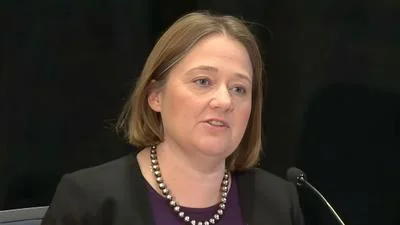The days in Southeast Alaska are getting noticeably shorter, the leaves of the cottonwood trees are turning, and there is a chill in the air, even when the sun is shining. With the majority of students having been back in school for more than a month, I find myself asking, “What happened to summer?” Then I’m reminded of all the summer programming, camps, and internships that helped it fly by!
This post is the first of a three-part series written in a celebration of the incredible place-based and culturally responsive educational programming co-developed by NOAA Fisheries scientists and partner organizations during the short 2022 summer season. I am extremely grateful to all our partners including Juneau School District, Discovery Southeast, Sealaska Heritage Institute and Alaska Native Science and Engineering Program.
Alaska Sea Week(s)
Alaska Sea Week is not actually a summer program or just a week, but rather a cornerstone of place-based education in Juneau, Alaska. It also served as an important kick off for in-person events at the Ted Stevens Marine Research Institute, home to the Alaska Fisheries Science Center’s Auke Bay Laboratories.
Sea Week dates back to 1968 and began as a grassroots effort by parents in Juneau to celebrate the ocean’s bounty and engage students in place-based learning. Auke Bay Laboratories has been involved in Sea Week activities from the start, providing interpretive programs for approximately 1,200 students, teachers, and parents during the months of April and May each year.
Between April 18 and May 20, 2022, NOAA Fisheries scientists guided elementary and middle school classes through a series of hands-on activities adapted from the Alaska Sea Grant Alaska Seas and Watersheds Curriculum.
Auke Bay Laboratories Sea Week lessons were designed to build on concepts introduced to students in the classroom. Activities highlighted current research at Auke Bay Laboratories and included key STEAM skills such as reading, writing, math, arts, and culture. Each activity encouraged students to notice, observe, and explore their environment.
The scavenger hunt activity and handout engaged elementary school students in the practice of observation and reflection. Students were encouraged to make observations that helped them answer the focus question: Where do you find plants (or seaweeds) and animals in relation to their needs for air, water, sunlight, or food? Students also had an opportunity to learn the English and Tlingit names of intertidal organisms and their key identifying characteristics. Credit: NOAA FisheriesMiddle school students worked with NOAA Fisheries geneticists to learn about environmental DNA (eDNA) analysis and how it is used to study fish communities in Southeast Alaska. They also had an opportunity to practice their pattern recognition and math skills while participating in a genetic sequence matching activity. Credit: NOAA Fisheries
Students got up close and personal with some of Juneau’s most fascinating tide pool creatures and learned how these organisms survive and thrive in their harsh intertidal world. The aquarium and touch tank exhibits inspired curiosity and gave students an opportunity to experience the thrill of discovery.
A hand-drawn thank you note from a student at Auke Bay Elementary. Credit: NOAA Fisheries
Sea Week Star Walk Community Science Monitoring Project
In response to educators wanting to engage their classes in additional place-based activities during Sea Week, NOAA scientists collaborated with the Juneau School District to co-develop a sea star monitoring project.
Sea stars are important predators in intertidal habitats. They prey on clams, mussels, and other invertebrates and can have strong effects on the overall species composition and diversity of the intertidal. Numbers and sizes of sea stars change over time due to disturbances like sea star wasting disease and heatwaves, or other changes in environmental conditions. Thus, it is important to collect baseline data to monitor changes and document health of sea star populations.
During Sea Week, elementary and middle school students counted, measured, and recorded the health of sea stars within 2 x 20 meter swath transects on beaches around Juneau. The survey was scaled so that any student, regardless of age or skill could participate.
Students from Mendenhall River Community School conduct transects for sea stars and anemones at Auke Rec Beach during low tide. Credit: NOAA Fisheries
With these surveys repeated at the same beaches every year during Sea Week, long term data will be accumulated that can be used to assess responses to changing environmental factors and can be used for future classroom lessons.
Stay tuned for the next post where I highlight NOAA Fisheries’ involvement in summer camps around Juneau.
Original source can be found here.








